The Young Persons' Lecture Competition invites students and professionals up to the age of 28 to deliver a short lecture on a materials, minerals, mining, packaging, clay technology and wood science related subject.
Finalists gave a 15 minute presentation on a technical topic of their choice and answered questions from a panel of three judges.
The winner will represent the UK at the online Young Persons' World Lecture Competition final in November.
Meet the finalists
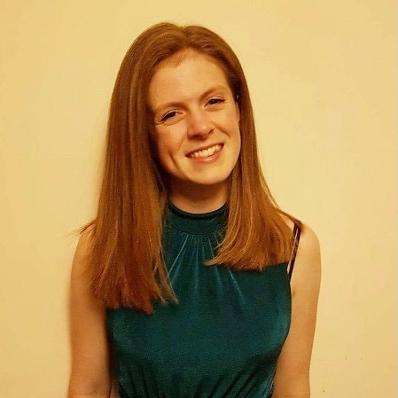
Scotland
Catriona Breasley

Scotland
Catriona Breasley
Catriona is a fifth year MGeol student in the School of Earth and Environmental Science at the University of St Andrews. She is currently researching the formation of hydrothermal manganese deposits at mid ocean ridge spreading centres under the supervision of Dr Eva Stueken and Dr Michael Byrne for her MGeol thesis.
She undertook an exploration geology internship at Cornish Lithium Ltd. in the summer of 2019 which inspired her to continue into further study looking at lithium deposits. This year, Catriona will start a PhD under the supervision of Dr Lee Groat at the University of British Columbia looking at lithium rich pegmatites.
Outside of academia she is an avid hiker, tennis player and loves to collect plant fossils along the beautiful Fife Coastal Path.
Deep-Sea Hydrothermal Manganese Deposition beneath the Arctic Ice Sheet
Deep-sea hydrothermal manganese deposits are known to be significant sources of rare earth elements and other critical metals. Found in a variety of settings, these nodules, crusts and enriched sediments have the potential to be economic sources of metal exploration and extraction.
Gakkel Ridge represents one of the least studied hydrothermal ridge systems in the world. Located beneath the Arctic Ice sheet, exploration and sample analysis is logistically difficult and expensive. Using Ocean Parcels software, a manganese decay and deposition kernel is implemented and sensitivity tested to show areas of enrichment around well studied vent sites across the world. This model is implemented onto Gakkel Ridge where areas of enrichment are located, and likely deposit formations are hypothesised. This talk ultimately aims to explain factors influencing manganese deposit formation, assess the use of advection-based modelling to predict manganese deposit formation and finally discuss these implications for deep sea mining.
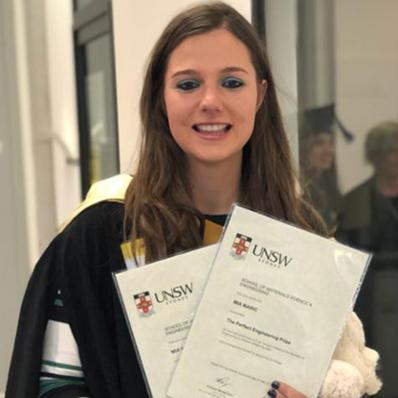
Winner - North West & North Wales
Mia Maric

Winner - North West & North Wales
Mia Maric
Mia is a third year international PhD student studying Materials Science at the University of Manchester. She completed her undergraduate degree at the University of New South Wales in Sydney Australia, where she won the university medal for the top performing student in Materials Science and Engineering. Mia conducted an internship at the Australian Nuclear Science and Technology organisation, where her passion for nuclear materials and their useability within the nuclear power industry was developed. During her studies, she has been thoroughly involved in an array of outreach activities particularly focusing on equity, diversity and inclusion work. Earlier in 2021, Mia was selected to attend the global young scientist symposium where her passion for encouraging females within science and technology to pursue and excel in research related careers was enhanced.
Outside of research, Mia enjoys playing hockey, running and hiking. When not doing sports, she can be found volunteering at the local cat shelter and trying to bake the perfect chocolate chip cookie.
How do Hexagonal Materials Recrystallise?
Recrystallisation of Hexagonal alloys is extensively utilised within both industrial and research applications as a means of microstructural development and mechanical property refinement. However, the multifaceted nature of this process has meant that the mechanistic drivers for the microstructural as well as textural evolution that occurs during heating is not yet understood. Here, a range of experiments combined with computational modelling techniques have been able to highlight that the deformation imparted onto the alloy prior to recrystallisation strongly dictates its behaviour during heating.
In this study we have developed a model to correlate the deformed microstructure to the strong orientation dependent texture change that is seen in hexagonal alloys during recrystallisation. Therefore, an understanding of the relationship between deformation and recrystallisation is essential if heat assisted texture control is to be utilised as a cost-effective method for mechanical property enhancement of hexagonal alloys.
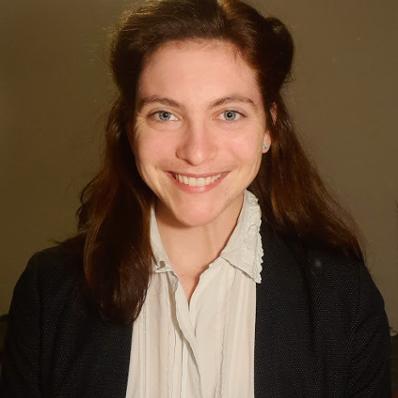
Midlands
Alex Dickinson-Lomas

Midlands
Alex Dickinson-Lomas
Alex is a PhD student in the School of Metallurgy & Materials at the University of Birmingham. She completed a BSc in Nuclear Science & Materials in 2018 and an MSc in Nuclear Decommissioning & Waste Management in 2019. After an MSc project based in the Cavendish Nuclear radiometric physics team, Alex stayed in the beautiful West Cumbria and started a role as a mechanical engineer for Arup in 2019. This gave brilliant insight into the decommissioning and engineering challenges faced by the aging nuclear sites in the UK and reignited an enthusiasm for understanding materials in a nuclear context. With a hankering for some more fundamental science Alex started a PhD project looking at radiation damage in nuclear materials under the supervision of Dr Yu-Lung Chiu and Professor Martin Freer in August 2020.
Outside of materials science she can often be found clinging to the sides of mountains, swimming in lakes or embarking on sewing projects.
Using Complementary Characterisation Techniques to Understand Radiation Damage in Nuclear Reactor Pressure Vessels
Extending the lifetime of nuclear reactors to improve sustainability is essential for the global future of energy generation. The critical component, the reactor pressure vessel (RPV), is subjected to extreme radiation conditions for over 50 years and must maintain structural integrity to ensure safe and secure reactor operation. Understanding the mechanisms and changes in microstructure and mechanical properties of RPV steels will enable more accurate prediction of lifelong performance. Combining a wide range of complementary characterisation techniques holds the key to understanding how these materials change in harsh environments and how we can create better predictive models for their behaviour.
This talk will briefly explain how combining techniques such as mechanical testing, transmission electron microscopy, atom probe tomography and small angle neutron scattering, is not only useful but necessary to underpin predictions and understand material behaviour.
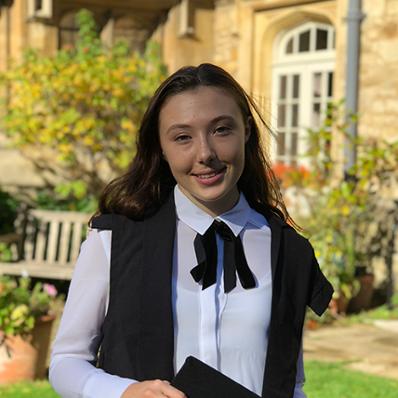
South East
Camilla Hurst

South East
Camilla Hurst
Camilla is a 3rd year undergraduate reading Materials Science at Corpus Christi College, University of Oxford. Her interest in materials science has stemmed from extracurricular research projects she carried out in high school. These projects have won her prizes internationally, including at the EU Contest for Young Scientist (EUCYS) and the Intel International Science & Engineering Fair (Intel ISEF). She has also been selected to participate in various scientific programs, namely the London International Youth Science Forum and the Weizmann Institute of Science International Summer Science Institute in Israel.
Outside of materials science, Camilla enjoys broadening her knowledge in areas from climate change to female representation in science. She believes in promoting science to the youth, and so has repeatedly volunteered at national young scientist contests. Camilla otherwise likes to spend her time running and painting.
The role of materials and surfaces in the transmission of bacteria
Covid-19 has highlighted the issue of viral transmission not only by particulates, but also via fomite surfaces. This will continue to be a critical issue if we are to prevent other pandemics and problems from antimicrobial resistance. We will see that materials can have an important role in solving this issue.
In my presentation I will discuss which surfaces are problematic in public places by drawing on evidence from a school study. This study shows the types of bacteria that are present as well as the different bacteria survival rates on a variety of materials. Interestingly, the bacterial death rate is highest on some natural woods. This is due to the chemicals involved in the natural defence mechanism of trees. Therefore, we should promote this sustainable material for use on fomite surfaces as much as possible.
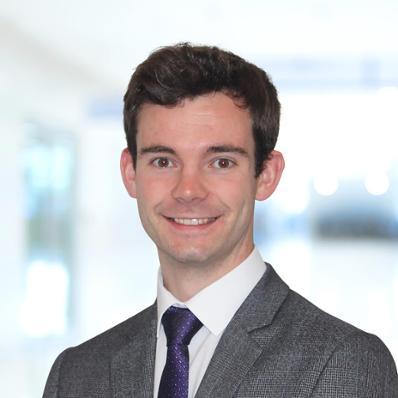
3rd place - South West & South Wales
Alastair Houston

3rd place - South West & South Wales
Alastair Houston
Alastair is currently working for Minton Treharne and Davies as a Consultant Materials Scientist, where his role is to perform investigations involving materials identification, mechanical testing, and failure analysis for the marine, cargo, and construction industries.
He studied Natural Sciences at the University of Cambridge, specialising in materials science, during which time he researched laser welding, protective coatings and compositional variations in jet engine turbine blades, and the production of new materials used for low-level nuclear waste storage. He continued his passion for materials science by completing a PhD in the Composites and Coatings Group, University of Cambridge, where his research focussed on the development of novel diesel particulate filters containing fine ceramic fibres. During his PhD, Alastair was heavily involved in the teaching of undergraduate students and spreading the joy of materials science through various outreach events.
In his spare time, Alastair enjoys spending time in the great outdoors, and can often be found hillwalking or cycling, as well as honing his juggling skills.
Finding Success in Failure
Why did it fail? When did it happen? Who is responsible? — Commonly asked questions in the field of materials failure investigations. Materials will degrade from the moment they are put into service, for example through wear of moving components, corrosion in a harsh environment, or fatigue cracking through repeated motions. Recognising this, materials intended for critical applications are carefully selected to withstand their particular service environment. However, sometimes their expected lifetime can be cut short by an unexpected and catastrophic failure, often with a large price tag for damages and litigation.
Once the dust settles following such an incident, it becomes necessary to answer the above questions. Through forensic study of failed materials, an investigator must piece together the evidence to find the nature of the failure. This presentation outlines the process of materials failure investigation with recent case studies on corrosion, fatigue and overload.
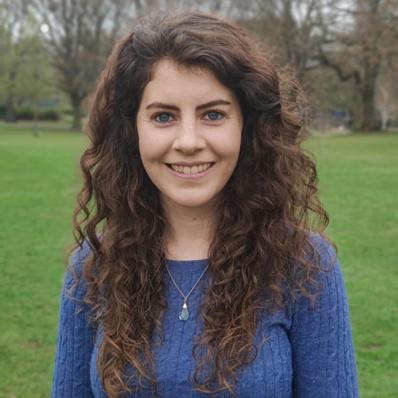
2nd place - North East
Frances Livera

2nd place - North East
Frances Livera
Frances is a first year PhD student in Materials Science & Engineering at the University of Sheffield and part of the Advanced Metallic Systems Centre for Doctoral Training. She completed her MChem in Chemistry at the University of York in 2019, and took particular interest in Materials Science during her course. Frances completed her final undergraduate year in industry, working full time at Unilever whilst completing her Masters. The Steel City was calling though, and she began her PhD in 2019, sponsored by the Culham Centre for Fusion Energy. Her research aims to improve the complementarity between Additive Manufacturing and Brazing, under the supervision of Prof. Russell Goodall and Prof. Iain Todd. She is involved in undergraduate teaching, will be hosting a Nuffield Research Placement and takes pride in being a STEM Ambassador, helping to inspire the next generation to pursue careers in STEM.
Aside from academic study, Frances can be found exploring and climbing in the Peak District, playing hockey, or baking up a storm. She has had an international upbringing spanning three continents, and enjoys experiencing different cultures and new places.
Improving the Complementarity between Additive Manufacture and Brazing
Additive Manufacture (AM) and brazing have seen significant research interest individually, but their combination has not been widely investigated. AM is a layer-upon-layer building technique that can produce complex, three-dimensional parts in shorter time frames than traditional manufacturing, but is limited by build size for metal part production. Brazing uses a molten filler metal to create a joint between two materials. Combining the geometrical freedom of AM with brazing could produce complex part geometries and reduce lead-times. The disparity between the surface finish of AM and the smoother roughness requirements for a brazed joint is the main challenge in combining the techniques. An AM surface may be tailored by implementing a topographical structure, to aid braze alloy wettability and control flow direction. The applications of this research are considerable due to the freedom of AM and its increasing popularity as a manufacturing technique in aerospace, medicine and the nuclear industry.
Timetable
5.00pm - Join
5.10pm - Welcome & Introductions
5.20pm - YPLC final
7.30pm - Networking
7.50pm - Results

